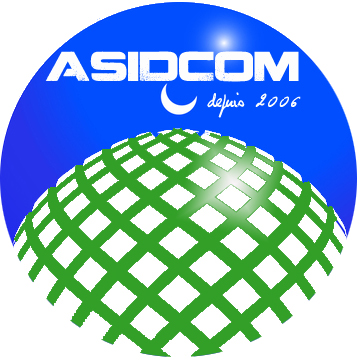Religious Slaughter in Europe : Consumer Deception and DialRel’s Failure
( français
![]() )
)
Hanen REZGUI (ASIDCOM, France), Joe M. Regenstein (Cornell University, USA), Abdel’ Aziz Di-Spigno (ASIDCOM, France)
The industrialization of farming and slaughter of animals has led to the emergence of new forms of abuse against food animals. From birth until slaughter, the animal is often seen as a source of raw materials. And when we read the governmental animal welfare regulations or hear the claims of certain institutionalized animal protection organizations, we wonder why animals are at times poorly treated by those who are supposedly responsible for them.
The know-how of the peasant and the manual handling of animals are disappearing gradually, giving up their place to more and more automatic handling that may or may not be appropriate from the animal welfare point of view. Similarly, the slaughter houses are encouraged to use slaughter techniques that allow for the development of larger private industrial abattoirs that often fail in Europe to be humane for the animals, including at times the need for excessive transportation. But some consumers prefer small abattoirs or local structures to respond to their specific needs.
This paper is meant to clarify a misunderstanding by consumers in general about the cruelty that can be inflicted on animals following the industrialization of animal farming and slaughter. To this reality, the deception of Muslim consumer and its religious authorities has beenadded in the past several decades. While animal welfare groups in Europe claim that stunning causes the death of the animal, a fact which suits the industry by allowing them to increase line speeds ; it is announced publically to consumers that stunning is assuredly reversible (report of l’Académie Vétérinaire de France).. However, often the conditions used for stunning when the religious authorities are present are different from those actually used in production, under working conditions in the meat industry.
We present data on the minimum amperage recommended by the OIE, the WHO’s animal health organization, for electrical stunning. Consumers or the religious authorities can check for themselves the actual effects of stunning as it might be practiced by those following the OIE recommendations.
Species Minimum intensity of stunning applied to the head only Cattle 1.5 amps Calves (cattle aged less than 6 months) 1.0 amps Pigs 1.25 amps Sheep and Goats 1.0 amps Lambs 0.7 amps Ostrich 0.4 amps
Species Minimum intensity (in milliamps per bird) Broilers 100mA Laying hens 100 mA Turkeys 150 mA Ducks and Geeses 130 mA
Minimum intensity (in milliamps per bird) Frequency (Hz) Chickens Turkeys <200 Hz 100mA 250mA from 200 to 400 Hz 150mA 400mA from 400 to 1500 Hz 200mA 400mA
But note that these currents are far from being actually used by the industry producing halal meat, and especially for poultry. This fact is substantiated by the EFSA (European Food Safety Authority) in a report entitled : “Proposal for a council regulation on the protection of animals at the moment of killing” :
“Poultry : Use of high frequency alternating current and/or pulsed direct current for water bath stunning.
The first water bath stunners used alternating current at a frequency of 50 Hz since this is the frequency delivered by the electricity providers. However, due to meat quality problems (blood splashes, broken bones) it appears that some slaughterhouses have been using either a higher frequency (e.g. 400 Hz) of alternating current or pulsed direct current. Scientists have pointed out that increasing the frequency of alternate current or using pulsed direct current may decrease the effectiveness of the stunning with animals being immobilised while being submitted to painful electrical shocks instead of being stunned. “ page 75, report on europa.eu web site
The issue of religious slaughter of halal meat is immersed in a mix of politics and socio-economic considerations. The economics require that religious slaughter be no different from conventional slaughter in Europe for reasons of profitability (and also at the expense of good working conditions for employees), which is significantly higher when using these methods versus a religious slaughter in accordance with the precepts of Islam and of Judaism. As for politics, Europe wants to serve these two large markets while not being respectful of their needs. Yet Europe is not ready to acknowledge that Muslim identity is now a part of Europe’s human heritage and richness. Finally, from the social point of view, there are attempts to manipulate public opinion using "bad science". Thus the Muslim (or Jewish) religious slaughter is brought forward in Europe as an infringement of animal welfare based on an assumption of Western Enlightenment that cannot accept the idea that traditional practices might actually be as good as or better than stunning based on the unproven assumptions about stunning that have become part of the religious belief of secular rationalism.
One example is the DialRel project of the EU, which has mainly consisted of a monologue from the scientific community, with a lack of respect and input from the religious communities. Many of its reports are now published on DialRel’s official website and falsely represent the idea of dialog.
- The advantages and benefits of religious slaughter are not properly considered by the reports of DialRel. Instead, it equates the opposition to stunning by consumers and religious authorities as a rejection of scientific progress, even as they misuse the science and violate some of the key principles of scientific reasoning, such as presenting enough information to permit the experiment and data collection to be repeated.
- The religious view of animal welfare is considered to be idealistic as it is considered incompatible with the industrialization of slaughter of animals by some authors of the DialRel reports. But we know that the five freedoms recognized recently for animals in our Western societies, are in fact the rights that Islam gave to animals fourteen centuries ago and are incorporated in Judaic text, the absence of a so-called dialogue can only be confirmed by the failure to recognize these basic religious standards.
- The animal must be "free from thirst, hunger and unfit food ", "free of physical and thermal discomfort", "free from pain, injury and disease", "free from anxiety and chronic stress" and "free to express their natural behavior." these five freedoms, when they are respected, guarantee animal welfare from birth until after it is slaughtered according to Muslim and Jewish religious practices.
- Scientific studies that confirm at least equality between religious slaughter and other slaughter methods, in terms of animal welfare, are considered biased by the authors of the DialRel reports or their conclusions are simply and deliberately ignored.
- Their "Guide to good practices during religious slaughter" refers to observations at undescribed industrial slaughter sites that may in fact have poor animal welfare and be inconsistent with the goals of halal and kosher slaughter. Moreover, the most recent studies on unstunned slaughter from New Zealand have been criticized by Dr. Temple Grandin, probably the most recognized animal welfare expert in the world, in a paper published on her website.
- The "Guide to good practices during religious slaughter” focuses on the act of animal slaughter, while animal welfare, as we recall, depends much more on the treatment received by the animal during handling prior to the cut itself. Unfortunately, the numerous investigations carried out by DialRel in slaughterhouses in Europe cannot be taken seriously because they focused on time of slaughter, while neglecting the rest of the process.
- Moreover, we note that the report suggested stunning animal as a remedy for an extension of consciousness, without addressing the fact that we must seek the causes of such an extension to avoid it for other animals, although the assumption behind that concern that a slow death is a poor death is an assumption that remains highly questionable.
- DialRel, rather than working in the context of religious requirements sets out to impose its own new form of slaughter. This is the only justification for the absence of any steps towards improving the conditions of religious slaughter and to developing new systems to enable it to meet the requirements of industrial production in terms of speed, ignoring the work of Temple Grandin, which has led to high speed plants in North America that meet the highest animal welfare requirements.
- Reversible stunning does not guarantee that the animal is alive at the time of the cut, and we have no way to verify the continuity of the life of an animal once stunned, especially on industrial production chains with their high speeds. The solution to verify that the stunned animal’s heart is beating before cutting or by observing the flow of blood after cutting in an industrial context is not practical.
- « Post-cut stunning is intended to hasten the death of the animal ; it is not reversible and NOT accepted by almost all of the Muslim community. Post-cut stunning is not used in the UK (MHS report, 2003). A pre-requisite for halal slaughter is that the animal should die from the cut and not from a blow or other physical action. Post-slaughter stunning does not, therefore, meet the Dhabah criteria. Inclusion and consideration of the religious requirements for slaughter, as stated above, would have made that obvious » (Shuja Shafi, Chair, Food Standards Committee, The Muslim Council of Britain, August 2010).
- The French Muslim community was not represented in this project although France has the largest Muslim EU community. The only french Muslim participant (the certification body AVS) that tried to be involved in Dialrel, has indicated its disappointment with the direction of the project with a press release it issued on its website (2010 March, http://www.halal-avs.com/).
The failure of Dialrel to promote and participate in open dialogue should not deter consumers and religious leaders from continuing to work to improve religious slaughter. They are expected to take responsibility for promoting development and improving the practice of religious slaughter with respect to animal welfare, religious requirements, and the consumer specific needs of Jewish and Muslims citizens of Europe.









